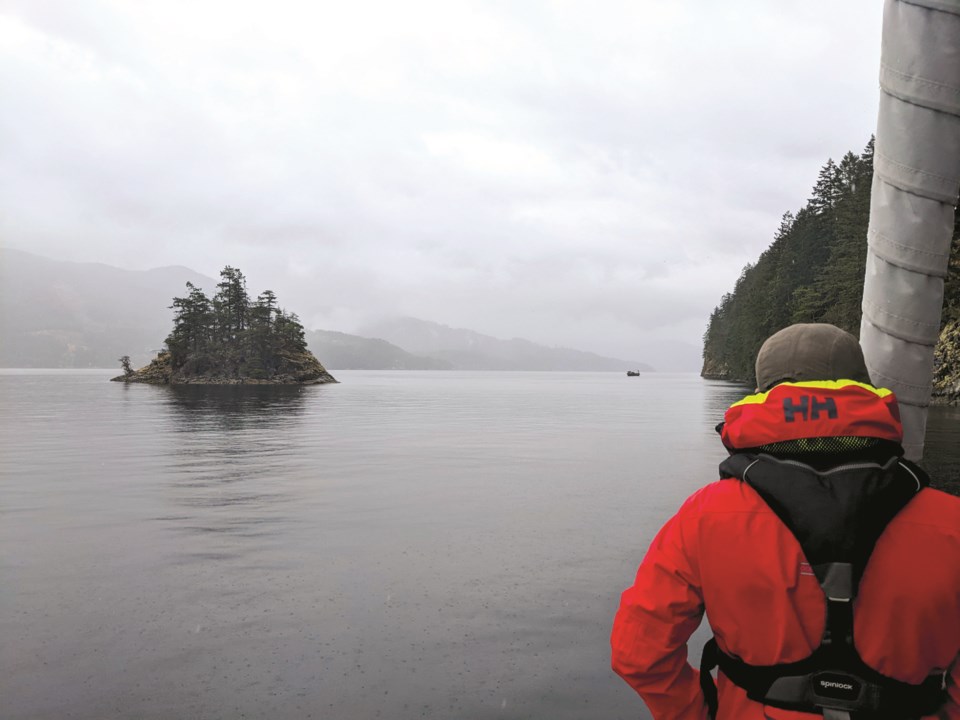I used to think sailing was just for rich folk and their families. The only way to get time on an ocean-faring watercraft was to have a private school friend whose dad owned a boat, or something like that. Unlike the (relatively) more accessible recreational pastimes such as overlanding, for example, sailing—or “cruising,” as I’ve learned is the term for multi-day or longer boat adventures—requires an investment equivalent to purchasing a home.
This is probably why people tend to think of sailboat owners as multi-car-owning, multi-homeowners. If you’ve ever taken one of those cute little False Creek Ferries in Vancouver and stepped off at Quayside Marina by Yaletown, you’ve probably walked past the behemoth vessels that reinforce this stereotype. But what I’ve learned in the last few years is that sailing isn’t just for Russian oligarchs or well-to-do, grey-haired members of high society with sweaters tied around their shoulders. There’s a whole subculture of aspiring younger sailors who are selling the owned stake of their homes (or foregoing homeownership altogether) in favour of live-aboard boat life. Two of my friends, a couple who resided in Whistler for the better part of 10 years, did exactly that.
"[S]ailing isn’t just for Russian oligarchs or well-to-do, grey- haired members of high society with sweaters tied around their shoulders."
From my conversations with these friends, boat life can bring experiences that you simply can’t get anywhere else. It’s also not for everyone, with the small living space, lack of reliable moorage (especially for live-aboard folk) and the never-ending list of boat upkeep tasks. But that all comes with the territory, and the rewards are worth it.
One of the bigger pieces of the puzzle is how to work full-time and live on a boat. My friends are both remote-primary workers, and they stay connected online via Starlink when they venture into areas of the coast without cell coverage. For the winter months, they’ve found a slip (that’s a floating parking spot for boats) within a ferry ride of Vancouver where they wait out the dark and rainy months of the year. They’ll sometimes go sailing from this base in fall and winter, as that is when you have the stronger and more consistent winds on B.C.’s south coast, which make for the most exciting sailing. But you don’t want to get too ambitious in unpredictable weather in this part of the world. Huge currents, whirlpools, rapids, and enormous, hull- damaging trees floating just under the water (aptly called deadheads) are just a few of the hazards that line B.C.’s rocky coast.
When spring arrives, my friends carefully watch the weather and wind patterns and start to look for ideal cruising windows. Stocking up their boat with food and fuel (all big sailboats need engines) they’ll venture throughout B.C.’s Gulf Islands, explore the dozens of inlets and sounds on the mainland and find absolutely stunning spots to drop anchor. They work for the week, explore islands via dinghy or paddleboard, go for hikes ashore, and generally enjoy the best of what boat life has to offer.
My partner and I were able to join our friends for one of these cruising trips over the Labour Day long weekend earlier this month.
Catching a ferry to Langdale and then driving up to meet them at their mooring at Madeira Park on the Sunshine Coast, we climbed aboard their Beneteau Oceanis and were treated to some unusually strong wind conditions for a warm summer weekend. Having a 50-foot vessel bank over while travelling at nine knots (I was told this is pretty fast, and it felt like it) was pretty exhilarating—I was just glad that I wasn’t in charge of keeping us afloat.
We dropped anchor for the night off the edge of Nelson Island near the mouth of Jervis Inlet with about half a dozen other vessels enjoying the sunniest part of the long weekend. The next morning we woke up to light rain, and shortly after setting off, we spotted a pod of orca whales in the distance. We motored through a tight passage heading northeast and proceeded to make our way further up the inlet to Hotham Sound. After dropping anchor again (and stern tying to make sure we didn’t drift into any rocks at low tide), the sun greeted us again for chill deck hangs and swimming in the ocean water. Sleeping comfortably, on the final day we motored back down Jervis Inlet and took a shortcut through the Agamemnon Channel back to Madeira Park with everyone having a go at the helm. The drive back to Langdale and the ferry ride back to the mainland were not nearly as exciting.
I don’t know if I’ll ever be a boat owner, but I know I’ll need a really good reason to turn down an opportunity to sail on one again. Next time I’d like to be a more useful deckhand, so maybe I’ll finally hit up the Whistler Sailing Association for the basics, or Squamish Sailing Ventures for learning some sea-faring navigation skills. Mountains are great, but there’s a lot more coastline in the world to explore.
Vince Shuley would like to thank his friends Tom and Vicky for a glorious weekend aboard Curio. For questions, comments or suggestions for The Outsider email vince.shuley@gmail. com or Instagram @whis_vince.




